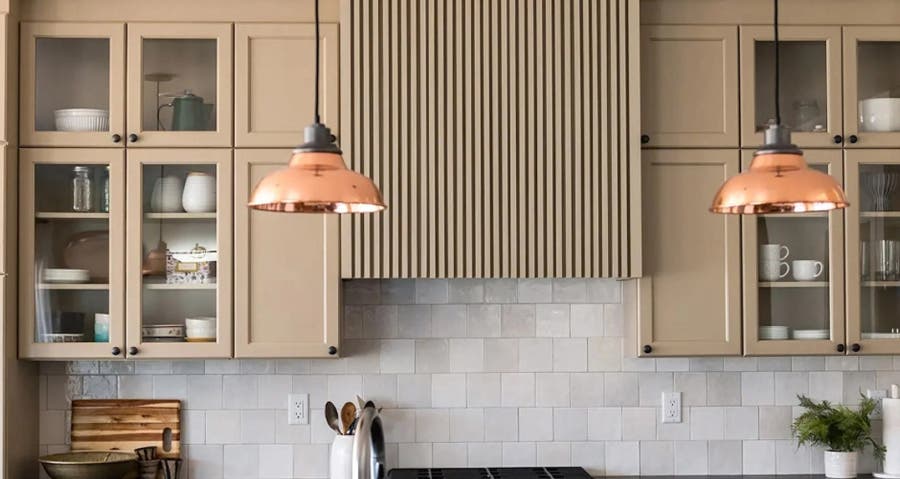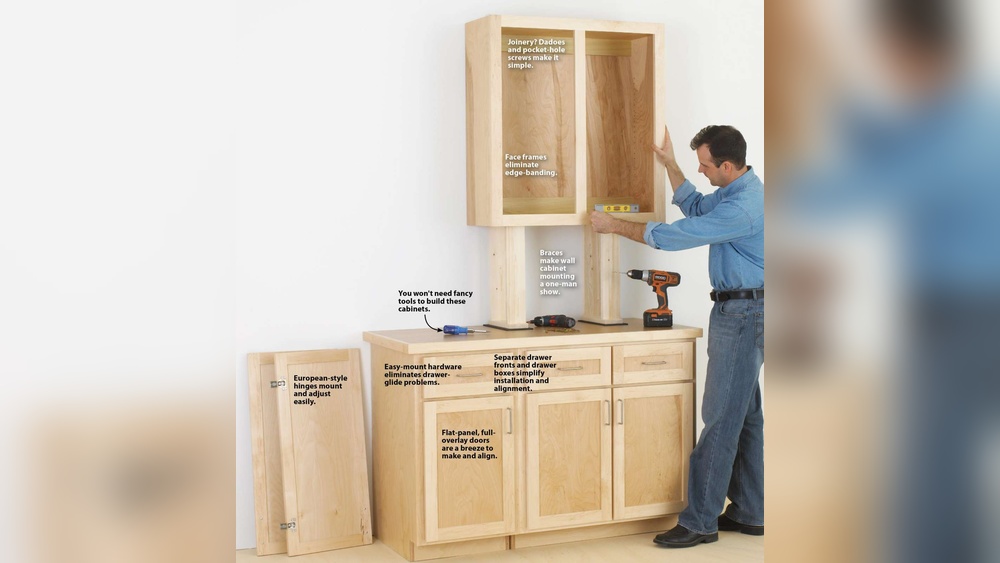Are you ready to transform your kitchen with cabinets that perfectly fit your style and space? Creating your own kitchen cabinets might seem challenging, but with the right guidance, you can design and build them to match your exact needs.
Imagine having custom cabinets that not only save you money but also give your kitchen a unique, personal touch. You’ll discover simple, step-by-step tips to help you create beautiful, functional kitchen cabinets—even if you’re new to woodworking. Let’s dive in and turn your kitchen dreams into reality!
:strip_icc()/7003788_DeMattia_0279-e283f1f497224852a79f1fe1ab271f00.jpg)
Planning Your Cabinets
Choosing cabinet style is the first step in planning. Styles like shaker, flat-panel, or raised-panel affect the kitchen look. Pick a style that fits your room and taste.
Measuring your space accurately is very important. Measure the height, width, and depth where cabinets will go. Check for obstacles like pipes or windows. Write down all numbers clearly.
Selecting materials depends on budget and durability. Common materials include solid wood, plywood, and MDF. Wood looks natural but costs more. Plywood is strong and less expensive. MDF is smooth and good for painting but less strong.

Gathering Tools And Supplies
Gathering the right tools and supplies is key for building kitchen cabinets. Essential woodworking tools include a circular saw, drill, and measuring tape. These tools help cut and join wood accurately.
Hardware and accessories like hinges, handles, and screws are needed to assemble and finish the cabinets. Choose quality items for durability and smooth operation.
Safety equipment is important. Always wear safety goggles, gloves, and a dust mask. These protect you from dust, splinters, and sharp tools.
Cutting And Preparing Wood
Start by cutting wood pieces accurately using a saw. Measure twice, cut once. Each piece must fit perfectly for strong cabinets.
Sanding smooths rough edges and prepares wood for finishing. Use fine-grit sandpaper. Sand all surfaces evenly to avoid splinters.
Apply a finish like paint or varnish to protect wood. This also gives the cabinets a nice look. Let each coat dry fully.
Create shelves and panels by cutting wood to size. Ensure shelves fit inside the cabinet frame snugly. Use support brackets or grooves to hold shelves steady.
Assembling Cabinet Boxes
Cabinet boxes join using strong dowels, screws, or cam locks. These methods keep the box sturdy and square. Use clamps to hold pieces tight during assembly.
Shelf pins fit into pre-drilled holes. They support shelves and allow easy height changes. Make sure holes are aligned evenly for better shelf stability.
Check frames with a carpenter’s square. This tool ensures corners meet at 90-degree angles. Adjust pieces before final assembly to keep the cabinet square and stable.
Building Faceframes And Doors
Constructing faceframes starts with selecting quality wood. Cut the pieces to exact sizes for a strong frame. Join pieces using glue and screws for durability. Ensure the frame is square before moving on.
Crafting door styles depends on the kitchen’s look. Simple flat panels offer a clean feel. Raised panels add depth and classic charm. Shaker style doors are popular for their simple, neat design.
Adding decorative details brings personality to cabinets. Use molding around edges for elegance. Beading or grooves create texture and interest. Small accents can make cabinets look unique and stylish.
Installing Drawers And Hardware
Start by building the drawer boxes using quality plywood. Cut pieces for the bottom, sides, front, and back. Assemble these with screws or nails, ensuring tight corners for durability.
Next, fit the drawer slides. Choose slides that match drawer weight and cabinet depth. Attach slides to the drawer sides and cabinet walls. Align carefully to allow smooth movement.
Finally, attach handles and knobs. Measure and mark holes on the drawer fronts. Use screws to fix handles or knobs firmly. Double-check alignment for a neat look.
Painting And Finishing Cabinets
Choosing paint or stain depends on the look you want. Paint gives a smooth, colorful finish. Stain shows the natural wood grain and color. Both need clean, dry surfaces before applying. Test a small area first to see the result.
Applying primer and coats is important for good coverage. Primer helps paint stick better and lasts longer. Use a brush or roller to apply a thin, even primer coat. Let it dry fully before adding paint or stain. Usually, two or three coats of paint or stain give the best look.
Protective finishes keep cabinets safe from water and scratches. Polyurethane or lacquer are common choices. Apply thin layers with a clean brush. Let each layer dry before adding the next. This makes cabinets look shiny and last many years.
:strip_icc()/20190521_meredith_002-2ad3962f1e604e499b8ce59ebe6481c6.jpg)
Installing Cabinets In Your Kitchen
Before installing kitchen cabinets, clear the wall completely. Remove any old cabinets, nails, and screws. Check the wall for damage or uneven spots. Repair holes and smooth the surface. Use a stud finder to locate wall studs. Mark the studs with a pencil to guide cabinet mounting.
Mounting cabinets requires strong support. Start by attaching a ledger board to the wall at the cabinet height. This board holds the cabinet weight during installation. Lift the cabinet and rest it on the ledger. Secure the cabinet to the wall studs with long screws. Use clamps to hold cabinets tightly together if installing more than one.
Aligning and leveling is key for a neat look. Use a spirit level to check cabinet position. Adjust by shimming under cabinet bases if needed. Make sure doors and drawers open smoothly without gaps. Double-check all screws are tight to keep cabinets in place.
Cost And Time Considerations
Budgeting materials and tools is key. Wood types vary in price. Plywood and MDF are cheaper than hardwood. Tools like saws, drills, and clamps add to costs. Buying some tools might be an upfront investment but useful for future projects. Planning the materials list helps avoid extra expenses.
Estimating project duration depends on skill level and cabinet complexity. Simple cabinets take a few days. More detailed work may need weeks. Time includes measuring, cutting, assembly, sanding, and finishing. Set realistic goals to avoid rushing and mistakes.
| Option | Cost | Time | Benefits |
|---|---|---|---|
| DIY Cabinets | Lower if tools owned | Longer; weeks | Custom design; personal satisfaction |
| Buying Cabinets | Higher upfront | Shorter; days | Convenience; professional finish |
Tips For Customization
Mixing materials like wood, metal, and glass adds unique style to cabinets. Combining different textures creates visual interest and depth.
Incorporating smart storage solutions improves kitchen function. Use pull-out shelves, lazy Susans, and built-in dividers to maximize space. These features keep items organized and easy to reach.
Personalizing finishes lets you match cabinets to your kitchen’s look. Choose paint colors, stains, or gloss levels that fit your taste. Finishes protect wood and add charm.
Common Mistakes To Avoid
Measurement errors can cause cabinets to not fit well. Always double-check your measurements before cutting any wood. Use a reliable tape measure and mark clearly. Small mistakes can lead to big problems later.
Poor joinery weakens the cabinet structure. Use the right joints like dovetail or box joints for strength. Avoid just nailing pieces together. Proper joinery keeps cabinets sturdy and long-lasting.
Rushing finishing steps lowers the quality of your cabinets. Take time to sand surfaces smooth and apply paint or stain evenly. Skipping steps may cause uneven color or rough textures. Let each layer dry fully before adding another.
Frequently Asked Questions
Is It Cheaper To Build Your Own Cabinets Or Buy Them?
Building your own cabinets can be cheaper if you have skills, tools, and time. Buying offers convenience and speed but may cost more. A hybrid approach balances cost and effort.
What Type Of Wood Do You Use To Make Cabinets?
We use hardwoods like maple, oak, cherry, and birch for durable, high-quality cabinets. These woods offer strength and beautiful finishes.
How Do I Decide Where To Put Things In My Kitchen?
Group items by use: place frequently used tools and ingredients within easy reach. Store heavy items low for safety. Keep similar items together to save time. Designate zones for cooking, prepping, and cleaning. Prioritize convenience and your kitchen’s workflow for efficient organization.
Can A Beginner Build Cabinets?
Yes, beginners can build cabinets by following clear instructions and starting with simple designs. Basic woodworking skills and patience help achieve good results.
Conclusion
Creating kitchen cabinets takes patience and careful planning. Start with clear measurements and choose quality materials. Follow each step to build sturdy and attractive cabinets. Remember, your effort saves money and lets you customize your kitchen. Take your time and enjoy the process of making something useful.
Soon, you will have beautiful cabinets that fit your space perfectly. Keep practicing to improve your skills for future projects. Making your own cabinets can be rewarding and practical.

